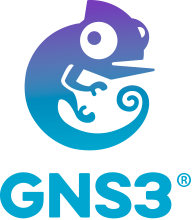
GigabitEthernet0/0/0/4 unassigned Shutdown Down default GigabitEthernet0/0/0/3 unassigned Shutdown Down default


Result, no interfaces RP/0/RP0/CPU0:ios#sh ip int brie

GigabitEthernet0/0/0/1 unassigned Shutdown Down default GigabitEthernet0/0/0/0 unassigned Shutdown Down default MgmtEth0/RP0/CPU0/0 unassigned Shutdown Down default Interface IP-Address Status Protocol Vrf-Name The param, as mentioned on QEMU page, define host passthorugh CPU model.Īfter that my Router boots (17minutes!!!!!), but I’m able to see network interfaces: RP/0/RP0/CPU0:ios# sh ip int brie

We operate several IOS XRv 9k appliances that were in default state default during the import process. The remote server is deployed in a Linux container. We operate a remote GNS3 server setup, where all components (server even clients) are version 2.2.25.


 0 kommentar(er)
0 kommentar(er)
